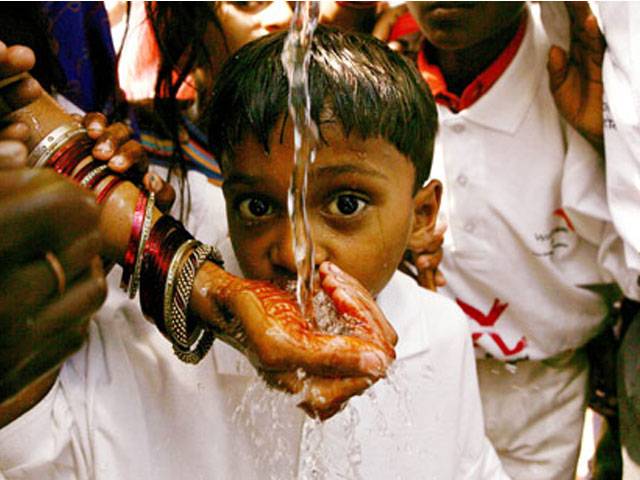ISLAMABAD – The World Water Day is being observed today to highlight the population growth and ensure access to nutritious food to everyone through a series of actions regarding water.
There are 1.1 billion people globally who lack access to clean and safe drinking water. In addition to this alarming disparity, there are also approximately 1.4 million children who die each year from water-borne diseases such as diarrhoea that can be easily prevented.
According to the Economic Survey 2010-11, in Pakistan, currently over 65 per cent of population is considered to have access to safe drinking water. Inadequate water supply results in high incidence of water related diseases, which in turn, increase morbidity and mortality rates and pose a major threat to the survival and development of children.
The National Standards for Drinking Water Quality (NSDWQ) have been approved on March 29, 2010, in order to improve the water quality and to provide the public with the safe drinking water.
Fortunately, the country is on track to Improved Water Resources.
This achievement owes partly to higher public sector investment in water supply schemes, and self-provision of water from hand and motor pumps in rural areas.
Around 95 per cent of the urban and 87 per cent of the rural population have now access to various areas of improved drinking water supplies with household connection of 48 per cent and 19 per cent respectively. Further, less than one per cent of the population has to travel more than 0.5 km to the source of drinking water as compared to 2 per cent at the start of the decade. However, access to water remains difficult in Southern Khyber Pakhtunkhwa, parts of Baluchistan, Tharparker and Cholistan.
In Pakistan it is estimated that as many as 60 million people do not have access to safe drinking water, and there are more than 100,000 child deaths per year that are a direct result of drinking unsafe water.
Furthermore, according to a World Bank report, Pakistan’s per capita water availability has diminished five-fold from 5000 cubic meters in 1951 to 1100 cubic meters in 2006 due to rising consumption by a growing population coupled with rising water waste.
The theme chosen for 2012, “Water and food security”, seeks to explore these two closely-related concepts, and the lack of which is causing severe crisis in increasingly more areas across the world.
According to the UN, food security exists when anyone can satisfy their dietetic needs in order to have an active and healthy life. Coping with population growth and ensuring access to nutritious food to everyone calls for a series of actions. Consuming less water-intensive products, reducing the scandalous food wastage and producing more food of better quality, with less water can be helpful measures to save water.
According to health experts 30 per cent of the food produced worldwide is never eaten and the water used to produce it is definitively lost.
Thursday, April 18, 2024
Water-borne diseases kill 1.4m children every year

Jailed Myanmar leader Suu Kyi moved to house arrest
April 18, 2024
Venezuela shuts Ecuador diplomatic missions over raid
April 18, 2024
Russian missile strike in northern Ukraine kills 16
April 18, 2024
Political Reconciliation
April 16, 2024
Pricing Pressures
April 16, 2024
Western Hypocrisy
April 16, 2024
Policing Reforms
April 15, 2024
Storm Safety
April 15, 2024
Workforce inequality
April 17, 2024
New partnerships
April 17, 2024
Shikarpur crisis
April 17, 2024
Peace quest
April 17, 2024
Democratic harmony
April 16, 2024
ePaper - Nawaiwaqt
Advertisement
Nawaiwaqt Group | Copyright © 2024





